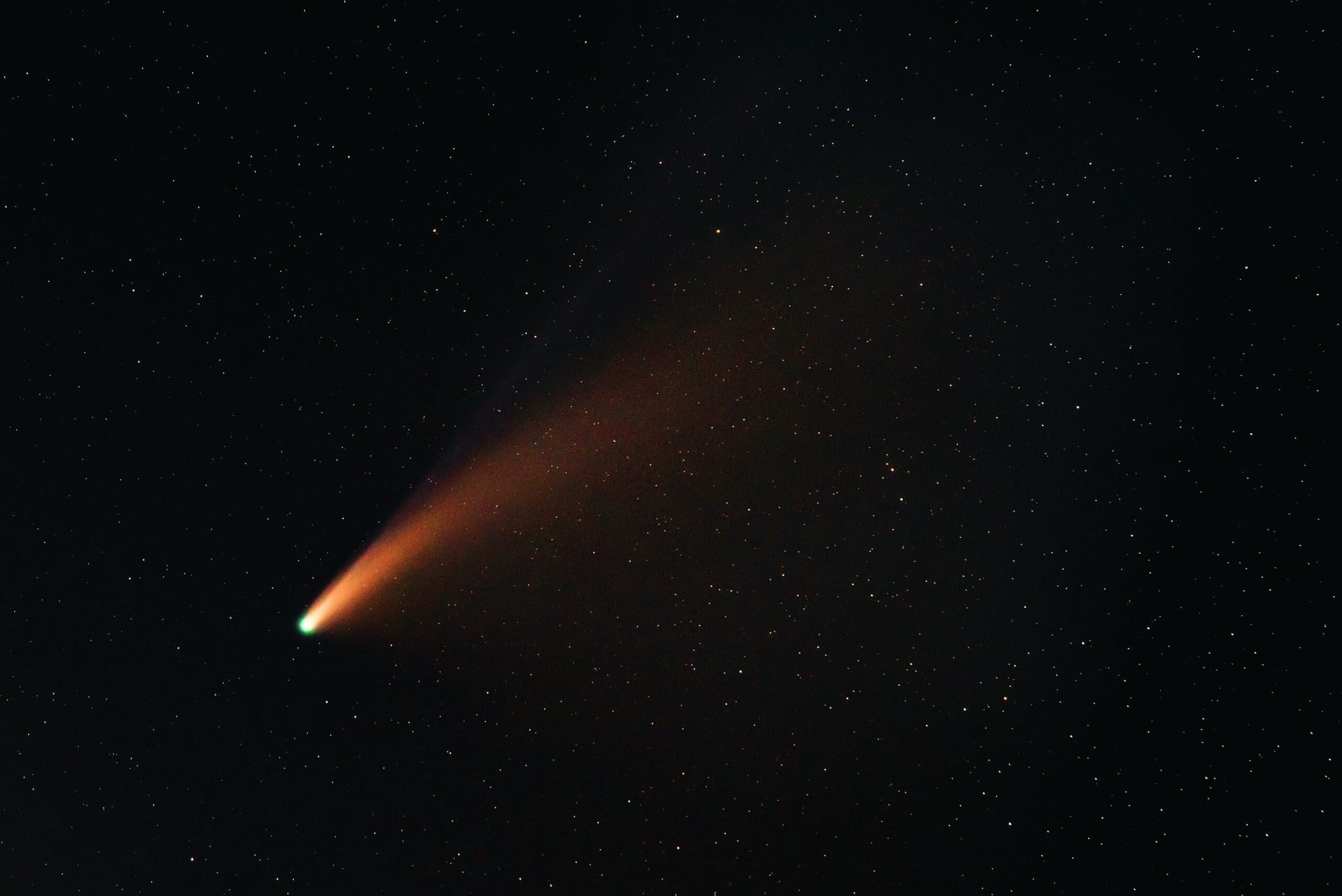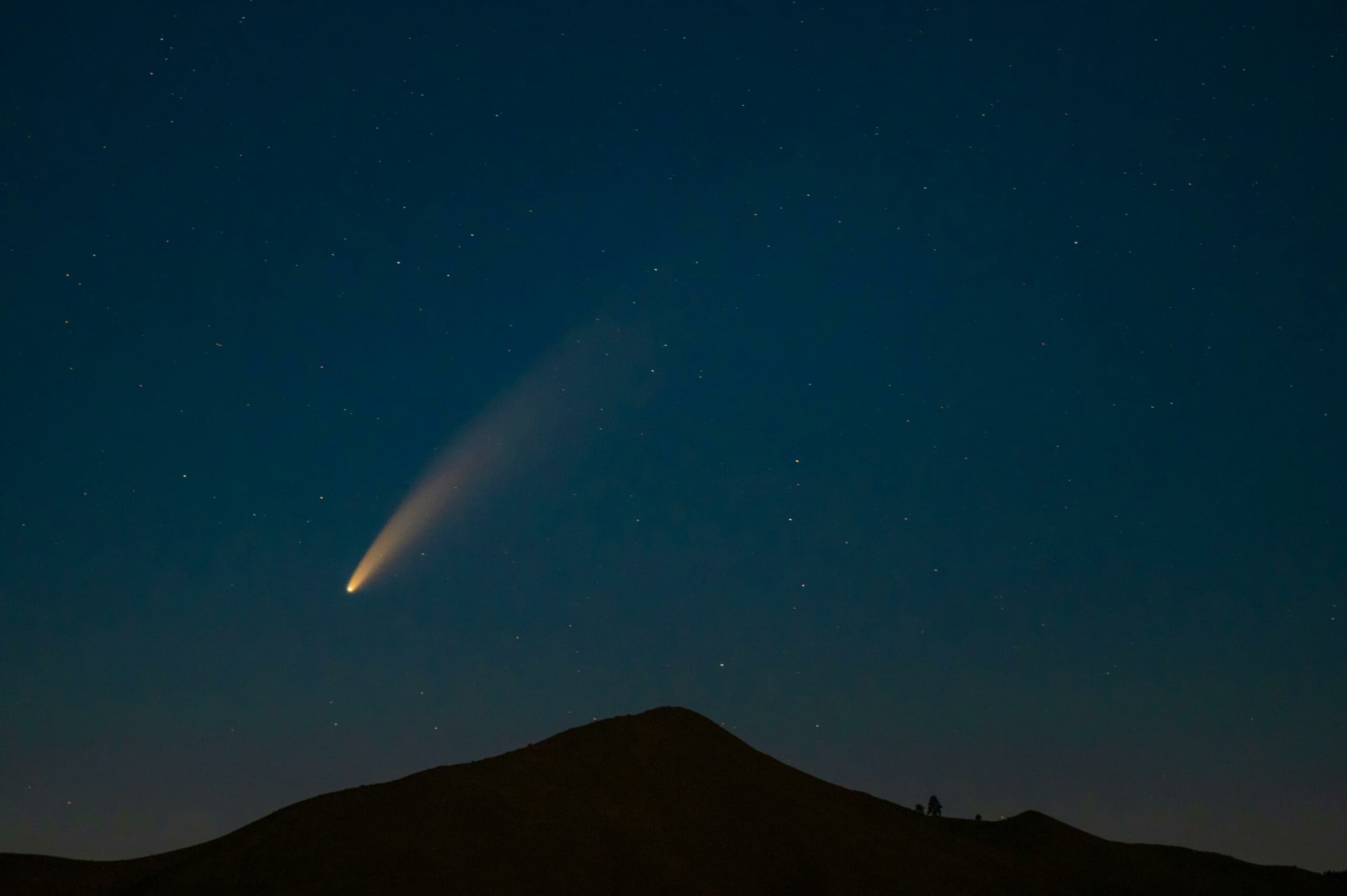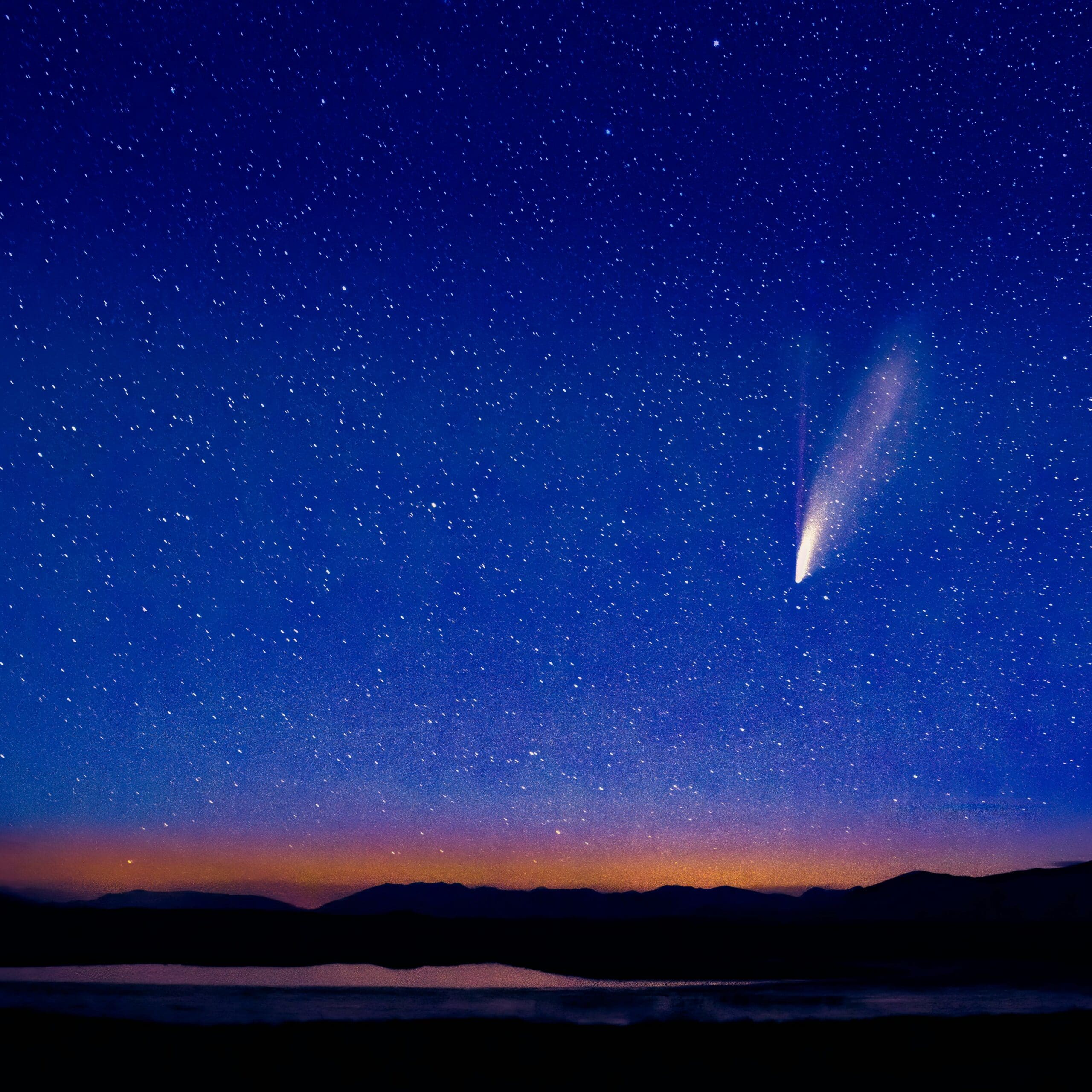
Comets Facts for Kids – 5 Captivating Facts About Comets
Table of Contents
Did you know that if you discovered a comet it will be named after you?! Let’s discover five captivating comets facts for kids.
Comets Facts for Kids Fact Number 1: It Takes Comets Different Lengths of Time to Complete an Orbit of The Sun
The length of time it takes for a comet to orbit the Sun can hugely vary. There are two types of comets, a short-period comet and a long-period comet. From their names you can probably guess how long it takes for these comets to orbit the sun.
A short-period comet takes less than 200 years to complete an orbit of the Sun. That may not sound like a very short length of time but compared to a long-period comet it is. A long-period comet can take anything from hundreds of thousands of years to 1 million years to complete an orbit of the sun. The closer a comet is to the sun the faster it will move.

Comets Facts for Kids Fact Number 2: Halley’s Comet Is One of The Most Famous Comets
The most famous comet is Halley’s comet and it was first observed by astronomer Edmond Halley in 1531 and then again in 1607 and 1682. It is considered a periodic comet and it returns to Earth’s vicinity about every 75 years. Halley’s comet was last seen in 1986 and it is expected to return in 2061. Halley’s comet is roughly 15 lm long, which is about forty times as tall as The Empire State Building
Comets Facts for Kids Fact Number 3: A Comet Has Four Components
Although comets can be different sizes and shapes, most of them contain the four main components, which are a nucleus, a coma, hydrogen envelope and the tail. The nucleus is the main solid part of a comet which is made up of rock, dust, and frozen gases. The coma is an envelope of gas that surrounds a comet’s nucleus.
A coma is formed when a comet gets close to the Sun and some of the nucleus’ icey material turns to gas and dust. The hydrogen envelope is a cloud of hydrogen that surrounds the coma of the comet. Lastly, a comet has two tails, an ion tail and a dust tail. As a comet gets closer to the sun its tail gets longer.

Comets Facts for Kids Fact Number 4: Comets Are Generally Named After Their Discoverer
Unlike meteors that are named after a constellation they are close to, Comets are usually named after the people that discovered them or those who studied them. The famous Halley comet was named after Edmund Halley. Comet Swift-Tuttle was named after discoverers Lewis Swift and Horace Parnell Tuttle and the comet Shoemaker-Levy 9 was the ninth periodic comet discovered by Eugene and Carolyn Shoemaker and David Levy.
Comets Facts for Kids Fact Number 5: Comets Are Sometimes Called Dirty Snowballs
Comets are nicknamed dirty snowballs to describe their composition. Comets are made up of ice, frozen ammonia methane, water and rocky debris and for this reason they are called dirty snowballs.

We hope you enjoyed learning more things about comets as much as we loved teaching you about them. Now that you know how majestic these comets are, you can move on to learn about our Space like: The Universe, Asteroids and Meteors.
Why not subscribe to our LearningMole Library for as little as £1.99 per month to access over 2800 fun educational videos.


Leave a Reply